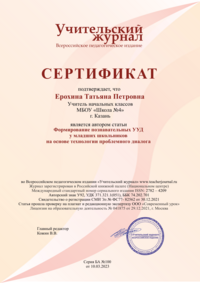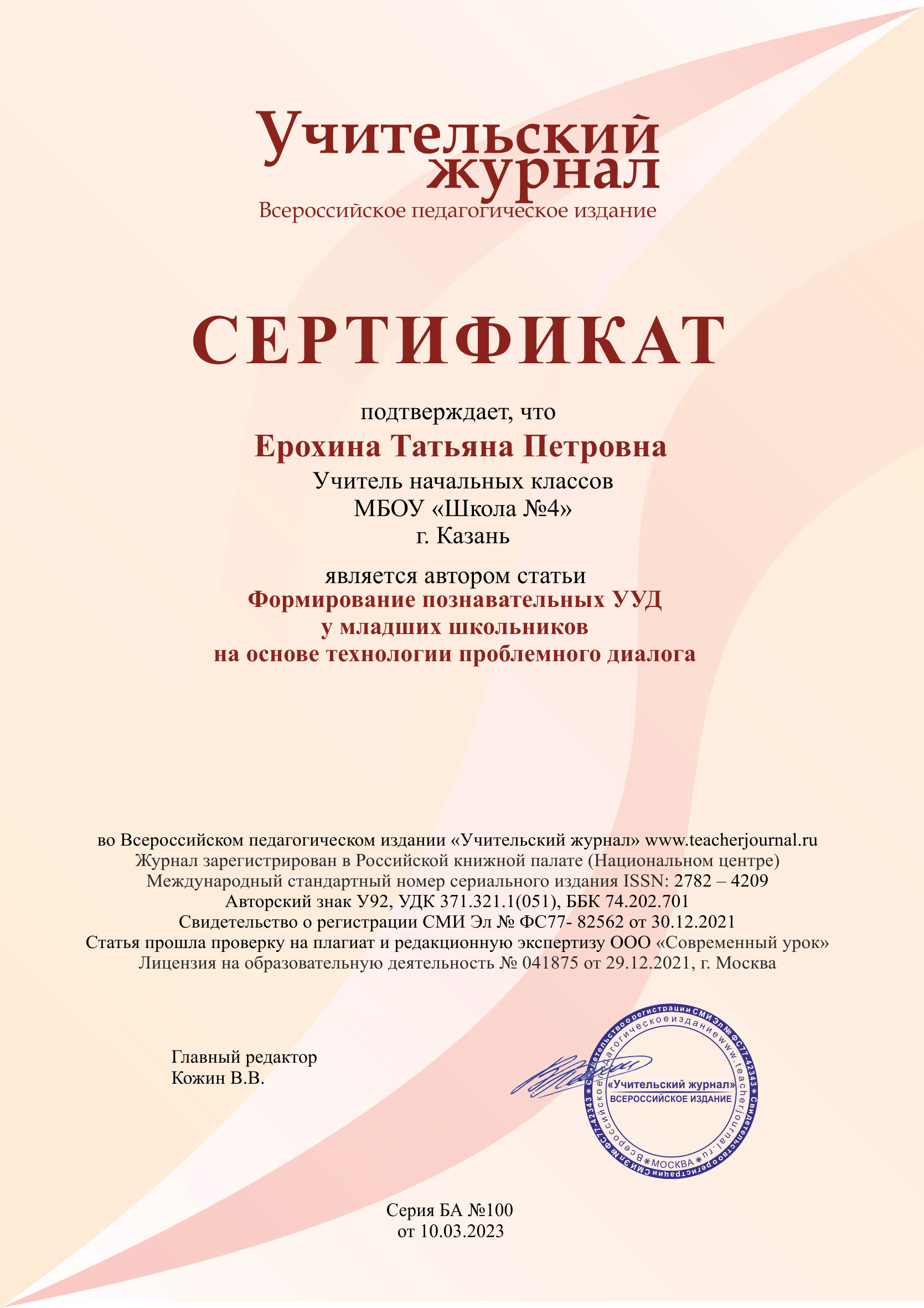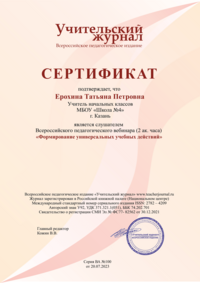Развернутый план-конспект открытого урока
Автор: Засецкая Ирина Эолитовна
Организация: ГБОУ СОШ № 46
Населенный пункт: г. Санкт-Петербург
Автор: Бычкунова Елена Владиславовна
Организация: ГБОУ СОШ № 46
Населенный пункт: г. Санкт-Петербург
Предмет: английский язык
Автор УМК (программы учебного курса): В.Эванс, Д.Дули, К. Баранова, В. Копылова, Р. Мильруд «Звёздный английский». Учебник для 11 класса общеобразовательных учреждений и школ с углублённым изучением английского языка, М., Просвещение, Express Publishing, 2023
Тема урока: «Cсоревнуемся вместе с героями «Алисы в стране чудес»
Место и роль урока в изучаемой теме: урок закрепления и обобщения изученного материала (лексико-грамматические структуры по предложенной теме, ведение дискуссии, неподготовленная речь по предложенной теме)
Форма урока: урок-соревнование
Цели урока: совершенствование лексико-грамматических навыков, навыков чтения, ведения дискуссии и говорения учащихся по теме «Литература», обучение учащихся успешному общению в ходе командных соревнований, используя вербальные и
невербальные средства, создание условий для проявления творческой индивидуальности и познавательной активности учеников.
Задачи урока: научиться успешно общаться с членами команды и с соперниками при выполнении заданий по предложенной тематике, работать в малых группах и в команде для поиска необходимой информации и принятия решений.
Планируемые образовательные результаты:
Предметные:
Отработка навыков употребления во всех видах речевой деятельности активных лексико-грамматических структур в соответствии с коммуникативной задачей. Совершенствование навыков узнавания в письменном и устном тексте изученных лексических единиц. Отработка навыков ведения дискуссии и беседы по предложенной тематике.
Метапредметные:
Развитие умений и навыков во всех видах речевой деятельности при планировании вербального и невербального поведения. Развитие исследовательских навыков: поиск, фиксация и обобщение информации. Совершенствование умения самонаблюдения, самоконтроля и самооценки. Тренировка физических способностей учащихся преодолевать разного рода препятствия в процессе соревнований.
Познавательные УУД: извлечение необходимой информации из прослушанного; совершенствование навыков самостоятельно делать выводы; умение обмениваться знаниями с членами группы, умение слушать и слышать друг друга.
Личностные УУД: освоение личностного смысла учения; желание продолжать свою учебу и развивать возможности самореализации средствами иностранного языка,
а также способствовать развитию познавательного интереса к окружающему миру и общению; познание и понимание новой культуры; уважение к своему народу и к культуре страны изучаемого языка; формирование мотива, реализующего потребность в социально значимой и социально оцениваемой деятельности; осознание языка, в том числе иностранного, как основного средства общения между людьми.
Регулятивные УУД: совершенствование навыков работы с компьютером и навыков использования иллюстративного материала в своей деятельности; умение взаимодействовать со взрослыми и сверстниками; преодоление импульсивности и непроизвольности; развитие способности совместно давать эмоциональную оценку деятельности класса на уроке; освоение критериев оценки выполненных заданий.
Коммуникативные УУД: формирование желания общаться с другими ребятами; участвовать в диалоге, дискуссии; слушать и понимать других; восприятие на слух речи учителя и одноклассников, способность ответного воспроизведения; овладение различными формами высказываний; развитие способности сотрудничать в совместном решении проблемы (задачи).
Средства обучения: учебники, раздаточный материал, оборудование лингафонного кабинета «Аудиториум».
Учебный аспект: совершенствование лексико-грамматических навыков говорения в виде монологической и диалогической речи, развитие навыков аудирования и говорения по теме «Литература».
Социокультурный аспект: усвоение обучающимися новых теоретических знаний по теме «Литература» и навыков общения с членами команды и соперниками.
Развивающий аспект: развитие внимания, наблюдательности, логического мышления, памяти обучающихся.
Воспитательный аспект: воспитание доброжелательности, искренности в общении с окружающими, готовности вести диалог и дискуссию и достигать взаимопонимания.
Межпредметные связи: физкультура, литература, история, психология и другие предметы гуманитарного цикла.
Педагогические технологии: проблемное обучение, ИКТ, коммуникативное обучение, здоровьесберегающие технологии, технология квестов.
Формы работы: командная, парная, групповая, индивидуальная.
Девиз урока: “Compete and study effectively!”
A double lesson “competing in company with the main characters of “Alice’s adventures in Wonderland” by L. Carroll
11th form
Pre-lesson activities:
reading the novel in the original and discussing it,
reading critical reviews of the novel,
writing a scenario, making costumes and producing a short musical based on the novel,
performing the musical at the Christmas Festival at school,
enjoying it all
THE CONTEST LESSON
I. Guessing the form of the lesson, splitting the class into two teams, unscrambling the lesson plan and setting the aims of the lesson
Teacher: Would you prefer to have a traditional lesson today or a lesson full of contests and fun?
Students: Fun and contests of course.
Teacher: OK. Now, guess, what characters will accompany you? They are all from the third mast often quoted book in the world.
Students: Are they from “Alice’s adventures in Wonderland” by L. Carroll?
Teacher: Sure. Now I want you to split into two teams, unscramble the lesson plan and set the aims of the lesson after a short discussion of no longer than two minutes. Here is a scrambled plan. You’ll get points for the right answers during your lesson.
THE SCRAMBLED LESSON PLAN
I. Summarizing, reflection and self-assessment
II. Brainstorming ideas on the issue “Is “Alice in Wonderland” mostly meant for children or adults?”, observing the rules of leading a discussion
III. Checking up the home-task. Watching the vlogs and answering the questions after a short discussion
IV. Watching two episodes from Tim Burton’s film “Alice in Wonderland” without a sound on the lap tops and dubbing them after short discussions in the teams
V. Arranging the parts of the jumbled dialogues in the correct order and role-playing them
VI. Answering the questions of the literary quest, completing the quotes and searching for a prize
VII. Guessing the form of the lesson, splitting the class into two teams, unscrambling the lesson plan and setting the lesson aims
VIII. Attributing belongings to the novel characters and explaining the choice
The students present their versions in teams after short discussions.
II. Brainstorming ideas on the issue “Is “Alice in Wonderland” mostly meant for children or adults?”, observing the rules of leading a discussion
Teacher: Now it’s time for you to warm up and brainstorm your ideas on the issue “Is “Alice in Wonderland” mostly meant for children or adults?” Don’t forget about the rules of leading a discussion. You are to support the point of view which you’ll get in an envelope. Here are the tips for discussions.
GENERAL TIPS FOR DISCUSSIONS
1. Do not think of the discussion as a way to show what you already know, but rather as an opportunity to learn something you don’t know.
2. Ask questions, share your ideas and work to reach understanding.
3. Accept that even your best ideas might be challenged. Keep in mind, in discussions you cannot be wrong so long as you can support your position.
4. Listen to your opponents carefully; make sure you understand everything they say.
5. Use correct grammar.
6. Be kind, ideas are meant to be challenged, but don’t be aggressive or negative.
The students lead a discussion after thinking over the arguments in teams.
III. Attributing belongings to the novel characters and explaining the choice
Teacher: Well done! Another task is to attribute belongings to the novel characters and to explain your choice in teams. Mind, some pictures do not belong here.
IV. Arranging the parts of the jumbled dialogues from “Alice in Wonderland” in the correct order and role-playing them
Teacher: Another contest requires logics and good acting skills. You will get the parts of the jumbled dialogues from “Alice in Wonderland”. You are to arrange them in the correct order and role-play them in teams in the best way possible without looking into the papers.
The students get the jumbled dialogues and complete the tasks.
A) Mad Tea Party
“No room! No room!” they cried out when they saw Alice coming. • A Dormouse was sitting between them, fast asleep, and the other two were using it as a cushion, resting their elbows on it and talking over its head. • There was a table set out under a tree in front of the house. And the March Hare and the Hatter were having tea at it. • “There’s plenty of room,” said Alice indignantly and she sat down in a large arm-chair at one end of the table. • The table was a large one, but the three were all crowded together at one corner of it
B) Advice from a Caterpillar
This was not an encouraging opening for a conversation. • Alice replied rather shyly, “I – I hardly know, sir, just at present – at least I know who I was when I got up this morning, but I think I must have been changed several times since then.” • “Who are you?” said the Caterpillar. • The Caterpillar and Alice looked at each other in a silence. • “What do you mean by that?” said the Caterpillar sternly. “Explain yourself.” • At last, the Caterpillar took the hookah out of its mouth and addressed her in a languid, sleepy voice.
V. Checking up the home task. Watching the vlogs and answering the bloggers’ questions concerning “Alice in Wonderland” and its author
Teacher: I believe, here comes one of the most catching tasks. It was your home task to make vlogs on behalf of the main characters of “Alice in Wonderland”. So, you’ll watch the vlogs and answer the bloggers’ questions concerning the novel and its author after short discussions in the teams.
The students watch the vlogs and complete the tasks.
VI. Watching episodes from Tim Burton’s “Alice in Wonderland” on the lap tops without a sound and dubbing them after short discussions in the teams
Teacher: I’m sure the next contest is the most difficult one but you will manage it. You will watch two episodes from Tim Burton’s “Alice in Wonderland” without a sound on the lap tops and dub them after discussing them in the teams. You’d better divide the episodes into several small parts to dub them more effectively.
The students watch the episodes from the film on the lap tops without a sound and dub them in the teams.
VII. Answering the questions of the literary quest, completing the quotes and searching for a prize
Teacher: We’ll have the next contest in the gym. You’ll get the rout sheets, overcome the obstacle course and only then will you be able to answer the questions of the literary quest, complete the quotes and search for a prize.
THE LITERARY QUEST QUESTIONS
• What is the primary purpose of the novel?
• What are the themes in the novel?
• What are the conflicts in “Alice in Wonderland” (physical, moral, intellectual, emotional)?
• What are some symbols in “Alice in Wonderland”? How do they relate to the plot and characters?
• Is Alice consistent in her actions? Does she develop as a human being?
• How does Alice relate to other characters in the book?
• Do you find the characters likable? Would you like to meet them?
• How does Carroll use poetry in this novel?
• Would you recommend this novel to a friend? Why?
COMPLETE THE QUOTES
• “The only way to achieve the impossible is to … … …. “
• “Why should I try to be like the others … … … … …? “
• “And remember, as long as you don't love yourself, … … ….”
• “Life, what is it but … …?!”
• "It's no use going back to yesterday, because I was a … … then. “
• "We're all … here."
• "Curiouser and …!"
• "'Who in the world am I?' Ah, that's the … …!"
• "It would have made a dreadfully ugly child; but it makes rather a … … "
The students overcome the obstacle course. answer the questions of the literary quest, complete the quotes and search for a prize.
VIII. A surprise jig-dancing master class from the Mad Hatter
Teacher: Now it’s high time to relax and have a surprise jig-dancing master class from the Mad Hatter.
The Mad Hatter presents his jig-dancing master class and the students enjoy themselves.
VIII. Summarizing, reflection and self-assessment
Teacher: Let’s sum up the results of the lesson.
Have we achieved the aim of the lesson?
What have you learned today? What else would you like to learn on this topic?
The students answer these questions and express their ideas.
Teacher: The winners of the competition get free tickets to a literary quest but they have a chance to make their own choice. The second team will be the next to choose.
At the end of the lesson, as usual, I want you to make short notes:
§ what you like and dislike about the lesson,
§ what you find interesting or boring at the lesson,
§ what you consider useful and useless at the lesson.
I would also like you to assess your own work and the work of your opponents.
Your marks will depend on:
• your own work,
• your cooperation skills,
• your classmates’ opinion of your work.
The students complete the charts and get the prizes.

 БЕСПЛАТНЫЕ семинары
БЕСПЛАТНЫЕ семинары






